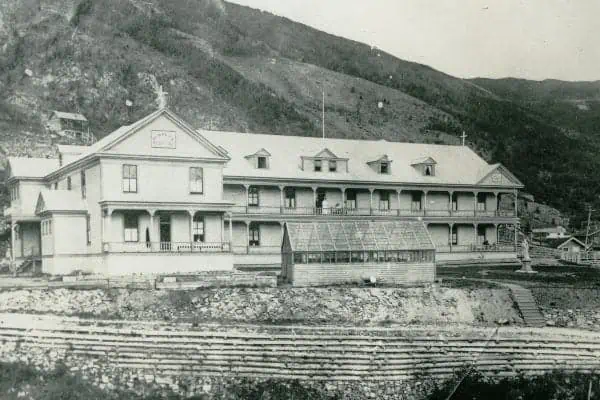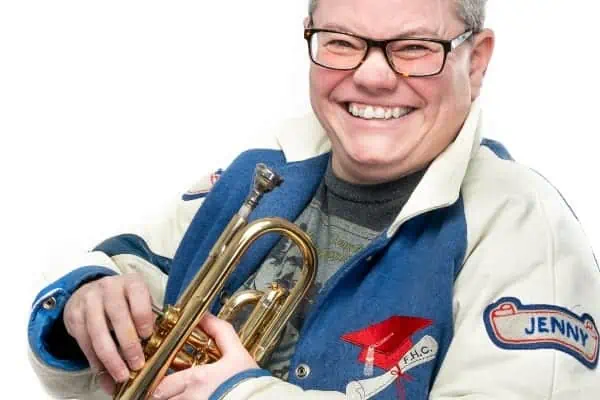The Klondike Gold Rush brought people from all over North America and the world to Dawson City.
It should be no surprise then, that among the thousands that poured over the Chilkoot Pass on their way to the City of Gold were representatives of a range of faiths.
The variation in churches that sprang up in Dawson at its peak is often discussed, and religious figures such as Bishop Bompas and Father Judge have long since become part of the lore of this town.
In its early years, the congregation was led by Harry Pinkiert, a businessman from San Francisco. Pinkiert was described as a “hustling merchant”, and the Dawson Daily News affectionately referred to him as “Pinkey.”
Pinkiert left Dawson, but he did return annually, making the trip from California until 1918 to visit his friends.
The Jewish community made at least one famous friend while on their way to the Klondike. Lt.-Col. John Henry Patterson, an Anglo-Irish author and Zionist, joined a group of Jewish stampeders at the height of the Gold Rush before going on to dramatic exploits.
In 1907 he hunted down and killed two man-eating lions in Tsavo, Kenya, which became the legendary basis for a number of films, including Stephen Hopkins’ The Ghost and the Darkness (1996).
Patterson’s relationship with the Jewish community affected him profoundly, and he was a life-long friend during a time of rampant anti-Semitism. Most notably, Patterson led the British Jewish battalion in Palestine during the First World War.
In Dawson, signs of the Jewish community can still be seen. The Dawson City Museum houses a small assortment of artifacts, including a large menorah prominently placed in the Museum’s Visible Storage area.
More than a few museum visitors have been surprised at the sight of this reminder of a religious minority that lived alongside the boomtown.
The largest tribute to the congregation is the Jewish cemetery. Set back from the Yukon Order Of Pioneers (YOOP) cemetery on the edge of town, the Jewish cemetery was founded in 1902 and a small number of burials was carried out there through 1918.
After 1918, the site suffered from a lack of care and general disuse.
The cemetery fell into a state of complete disrepair by 1997, to the point it was hardly recognizable. This caught the attention of a Dr. Norman E. Kagan, who raised awareness of the problem with a notice in American Jewish World newspaper. Kagan’s concerns led to action in short order.
In February 1998, the Jewish Historical Society of Yukon formed in Whitehorse and quickly succeeded in petitioning the government for oversight of the cemetery land, which they committed to restoring and maintaining.
With money provided by the Canadian Jewish Congress, the group restored the cemetery with new picket fencing and a metal gate bearing the name of the site: Bet Chaim, or “House of Life”.
Bet Chaim was rededicated on August 22, 1998, less than one year after the need for its restoration was expressed. The deputy prime minister at the time, Herb Gray, attended the event and acted as keynote speaker.
There are believed to be eight people buried at Bet Chaim, though only five mounds are visible. A number of Dawson Jews were buried across the street at the public Hillside cemetery.
Only one stone marker can still be read. It belongs to Solomon Packer, a merchant who passed away in 1918. Packer operated a hardware store on Front Street. His downfall was a heart attack suffered while carrying in a load of firewood.
Although he was a member of the Yukon Order of Pioneers and could have been buried in the YOOP cemetery, Packer was buried among the people who shared his faith.
At the time of his death, Packer was the only remaining Jewish merchant in the Klondike, and his passing at age 57 marked the end of an era. Harry Pinkiert made his final trip to the Yukon at that time and purchased the gravestone for his friend, which remains intact.
Who are the others buried in Bet Chaim? What stories are there to tell about this tiny group of individuals buried together so far from their homes and families? Without any legible markers or adequate records, it is possible that we will never know.
The four burial mounds may remain a mystery.




